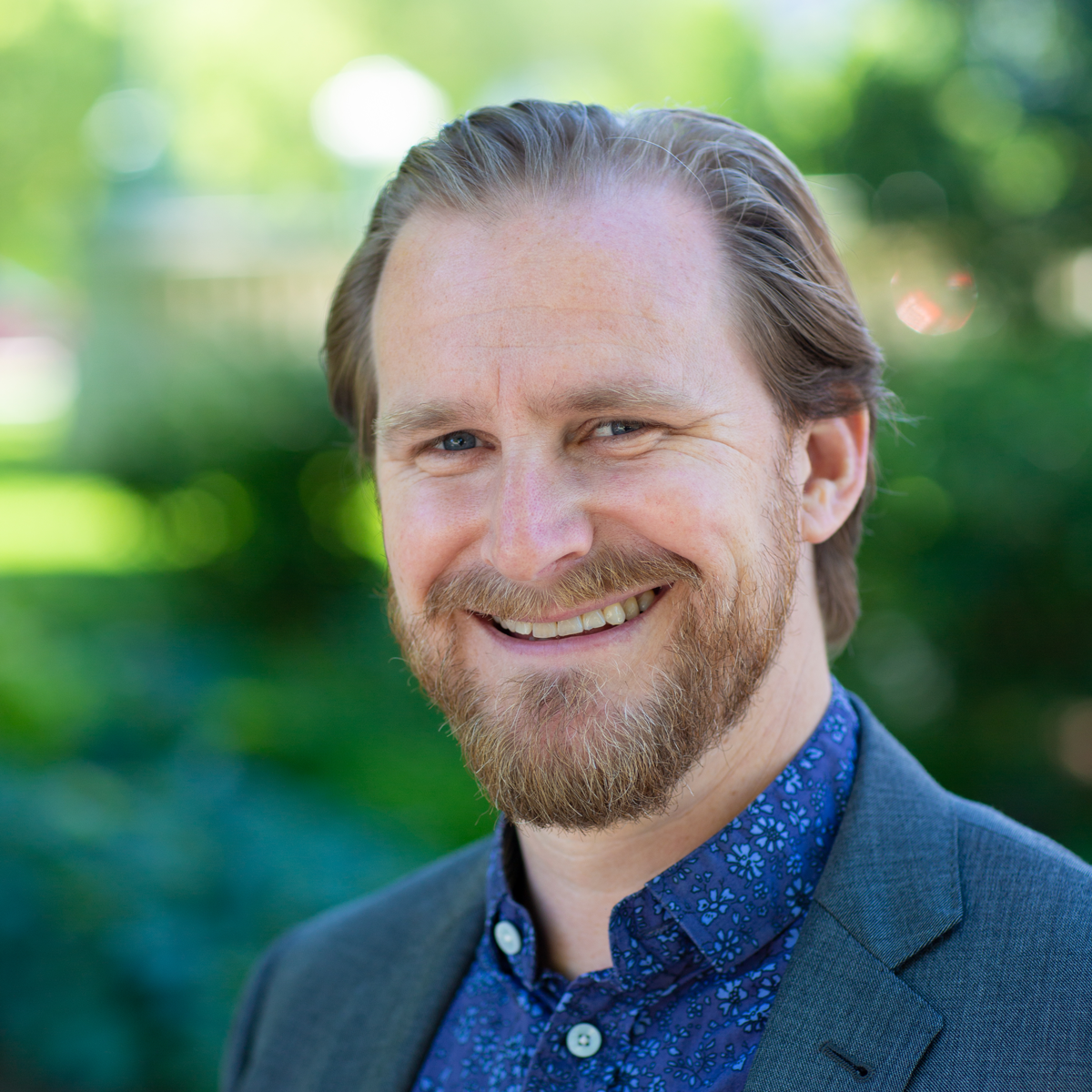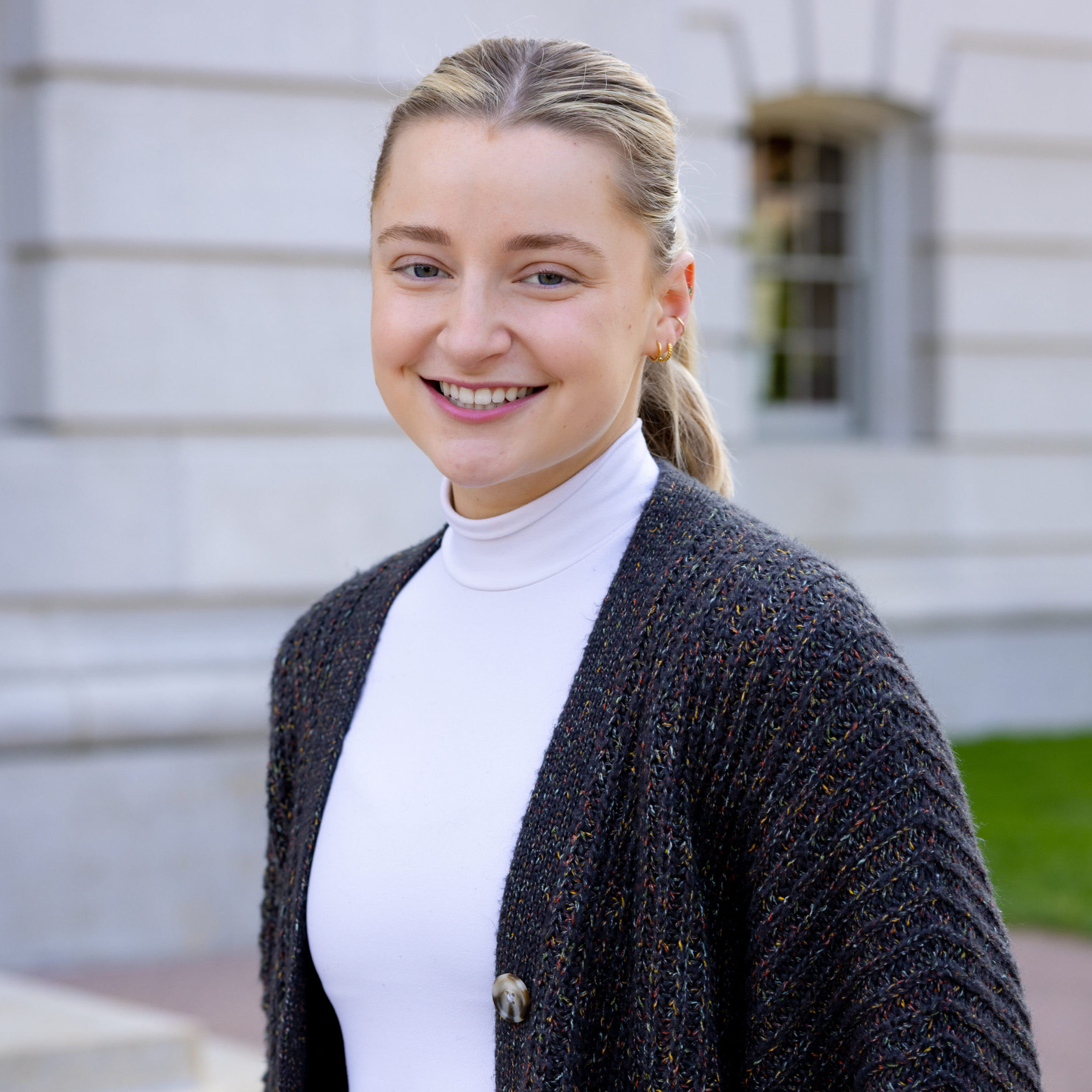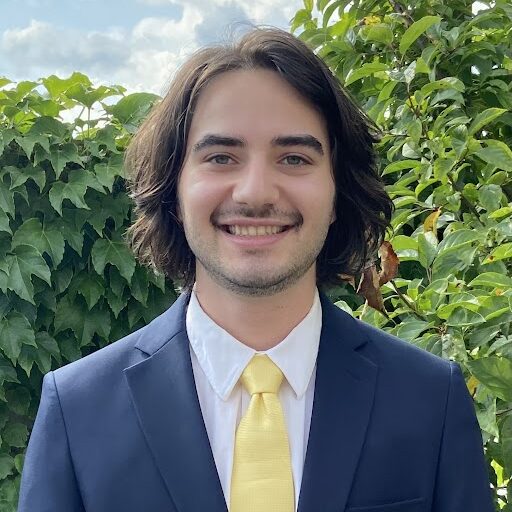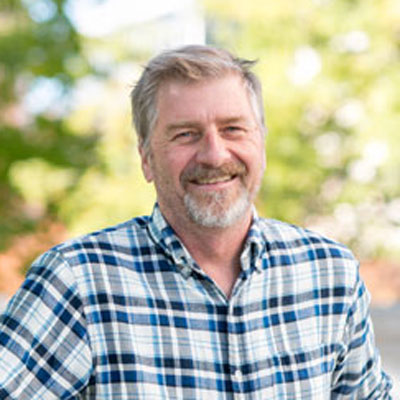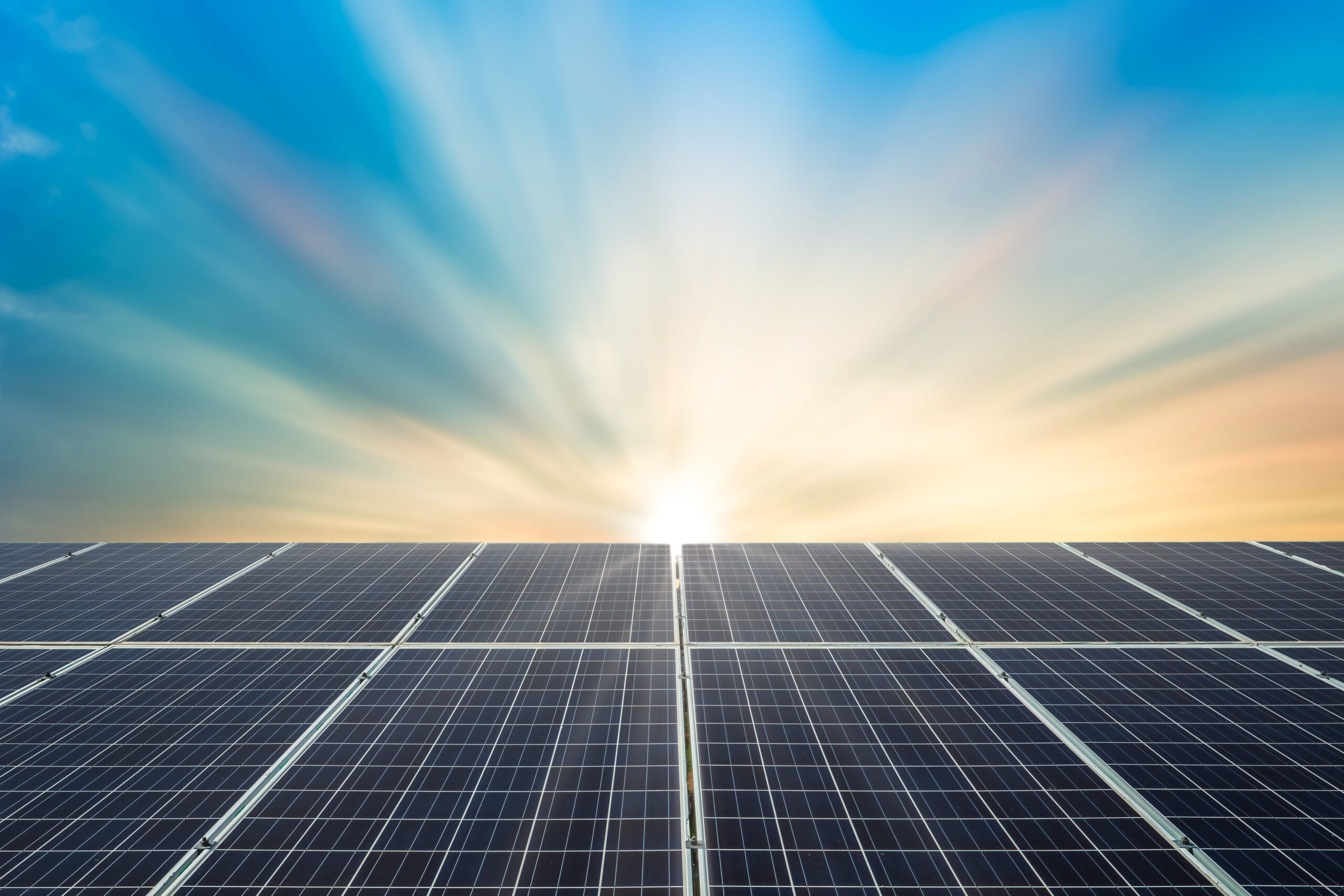
by Alex Beld | Sep 15, 2023 | Advocacy, Public Service Commission, Solar, Utility Scale
The Elk Creek Solar project, located in the Township of Spring Brook in Dunn County, was approved this month by the Public Service Commission of Wisconsin (PSCW). The 300-megawatt (MW) solar project is paired with a 76.6 MW battery energy storage system and is expected to go online by the spring of 2026.
As designed, Elk Creek Solar would supply homegrown, affordable, emission-free electricity to power the equivalent of approximately 60,000 homes for at least 30 years. RENEW Wisconsin submitted testimony in support of the project, and we are excited for construction to begin.
The developer of the project, TED Renewables, has been engaged and transparent with the Springbrook community throughout the approval process by providing detailed information on the benefits and timeline of the project. Beyond generating revenue for local schools and government services, the project is expected to create upwards of 650 jobs during the construction phase and 3-4 highly skilled long-term jobs.
According to TED Renewables, the annual tax revenues for all taxing districts will exceed $1.2 million. As stated in the La Crosse Tribune, “Spring Brook township of $500,000, Dunn County of $700,000 and the Elk Mound Area School District of $60,000.”
Construction is projected to start in the fall of 2024. Throughout the life of the project, the landowner will retain the title to the land and sign a 30-year lease, with the option for a five-year extension. At the end of its operational life, the equipment will be recycled or reused, and the land will be restored. By giving the soil time to rest and planting deep-rooted plants, the quality of the soil will be improved substantially by the time it is once again ready for agricultural use.
Elk Creek Solar is the 17th project larger than 100 MW the PSCW has approved since 2019, totaling 3,249 MW for Wisconsin. Several other projects, including Silver Maple Solar, are awaiting approval.
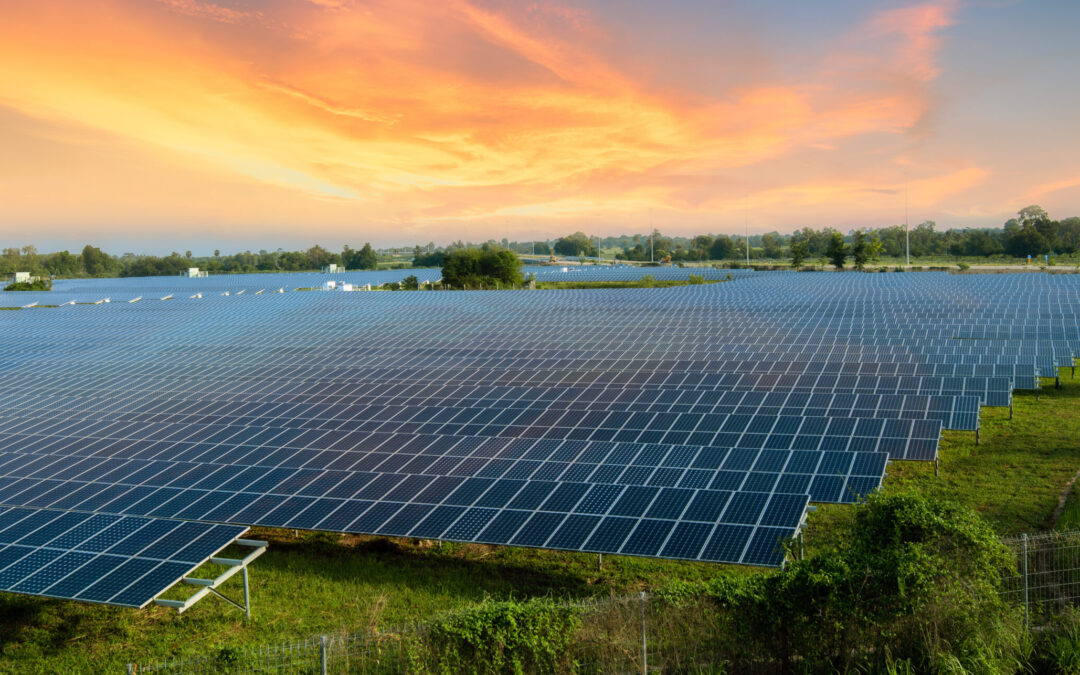
by Michael Vickerman | Jun 29, 2023 | Solar, Utilities, Utility Scale
Wisconsin electric providers added significantly more renewable energy content to their electricity supplies in 2022, according to a June 2023 report issued by the Public Service Commission. Overall, renewable energy accounted for 16.2% of Wisconsin electricity sales in 2022, increasing more than two percentage points from the 13.8% level recorded in 2021.
Renewable energy performance varied widely among individual electric providers. At the high end, Northern States Power-Wisconsin (Xcel-NSPW) reported that 44.5% of the electricity it sold in 2022 came from renewable energy sources (see Table 1). Though making up only 10% of Wisconsin electricity sales, Xcel-NSPW accounts for nearly 27% of the state’s total renewable electricity supply. Most of the utility’s added renewable energy supplies came from wind power projects in Minnesota and the Dakotas.
Wisconsin Power and Light (Alliant-WPL) also posted healthy gains in 2022, rising from 20.2% in 2021 to 24% last year. Indeed, of the 11.3 million megawatt-hours (MWh) of renewable energy sold in Wisconsin in 2022, about one-half of that total (5.7 million MWh) flowed through either Xcel-NSPW or Alliant-WPL to their customers.
Under the state’s Renewable Portfolio Standard (RPS), electric providers must track their renewable energy sales from the previous year and provide those results to the Public Service Commission. The 2022 results are retrievable from the Commission staff memo issued in Docket 5-RF-2022, specifically Appendices D and E of PSC REF#: 470111. These annual reports also compile renewable electricity provided through utility renewable energy tariffs, such as community solar offerings.
The PSC’s RPS reports break down aggregate renewable power totals by resource and state of origin. Imports from other states accounted for nearly two-thirds of total renewable electricity sales (64% vs. 36%). In 2022, wind projects generated 74% of the renewable electricity sold in Wisconsin, followed by hydro (14%), solar (7%), and biomass (4%). Moving in with greater granularity, wind power originating from out-of-state sources accounted for 59% of total renewable energy sales, followed by in-state wind (15%), in-state hydro (10%, and in-state solar (6%).
The percentage of out-of-state wind generation relative to total renewable electricity sales has increased dramatically since 2017, rising from 48% to 59%.
Tracking individual utility performance
In the wake of utility commitments to substantially reduce carbon emissions by 2030 and reach net zero emissions by 2050, these compliance reports take on added importance in tracking electricity provider progress in meeting their goals. Table 1 below shows that while some utilities, such as Xcel-NSPW and Alliant-WPL, have responded quickly to the challenge, others, such as We Energies, have made little headway. As documented by these annual reports, the volume of renewable MWh sold to We Energies customers has declined since 2017.
Bear in mind that We Energies, the state’s largest electric utility, accounts for about one-third of total electric sales in Wisconsin (23.5 million MWh out of 69.9 million MWh). Of that total, only 1.46 million MWh, or 6.2%, were generated from renewable resources. While We Energies derives a significant portion of its electricity supply from the Point Beach Nuclear power plant (8.7 million MWh in 2022), it will be no small undertaking to acquire solar capacity quickly enough to overcome the lackluster results of recent years.
We Energies owns approximately 30 MW of the 1,000 MW of solar generating capacity presently operating in Wisconsin. Though its first two major solar investments—Badger Hollow 2 (50 MW) and Paris (150 MW)—are expected to commence operations in the fourth quarter of this year, their output won’t deliver a noticeable boost to We Energies’ renewable energy content until 2024, which will be reflected in the Commission’s 2025 RPS report. We Energies’ share of Badger Hollow 2 and Paris should generate 400,000 MWh/year, equivalent to 1.7% of We Energies’ 2022 sales.
We Energies will need to greatly accelerate the pace of their generation transition to become 20% renewably powered by 2030, effectively tripling the 1.46 million MWh recorded in 2022.
In contrast, 69% of the electricity supplies serving Xcel Energy’s Upper Midwest territory came from carbon-free sources in 2022, according to its corporate sustainability report. (Note: the 69% number includes output from Xcel Energy’s two nuclear power units in Minnesota). By 2030, the percentage of carbon-free generation is expected to rise to 81%. The report also states that, by 2029, coal generation will no longer supply Xcel’s Upper Midwest territory, including NSPW.
This spring, Xcel-NSPW committed to purchasing the output from the Apple River solar farm in Polk County, adding 100 MW of solar power and 100 MW of storage capacity to its generation portfolio. Developed by National Grid Renewables, Apple River should be online sometime in 2025.
And by July 2024, Alliant-WPL will have completed and placed in service close to 1,100 MW of solar generating capacity in Wisconsin, which will account for 20% of that utility’s sales in the Badger State.
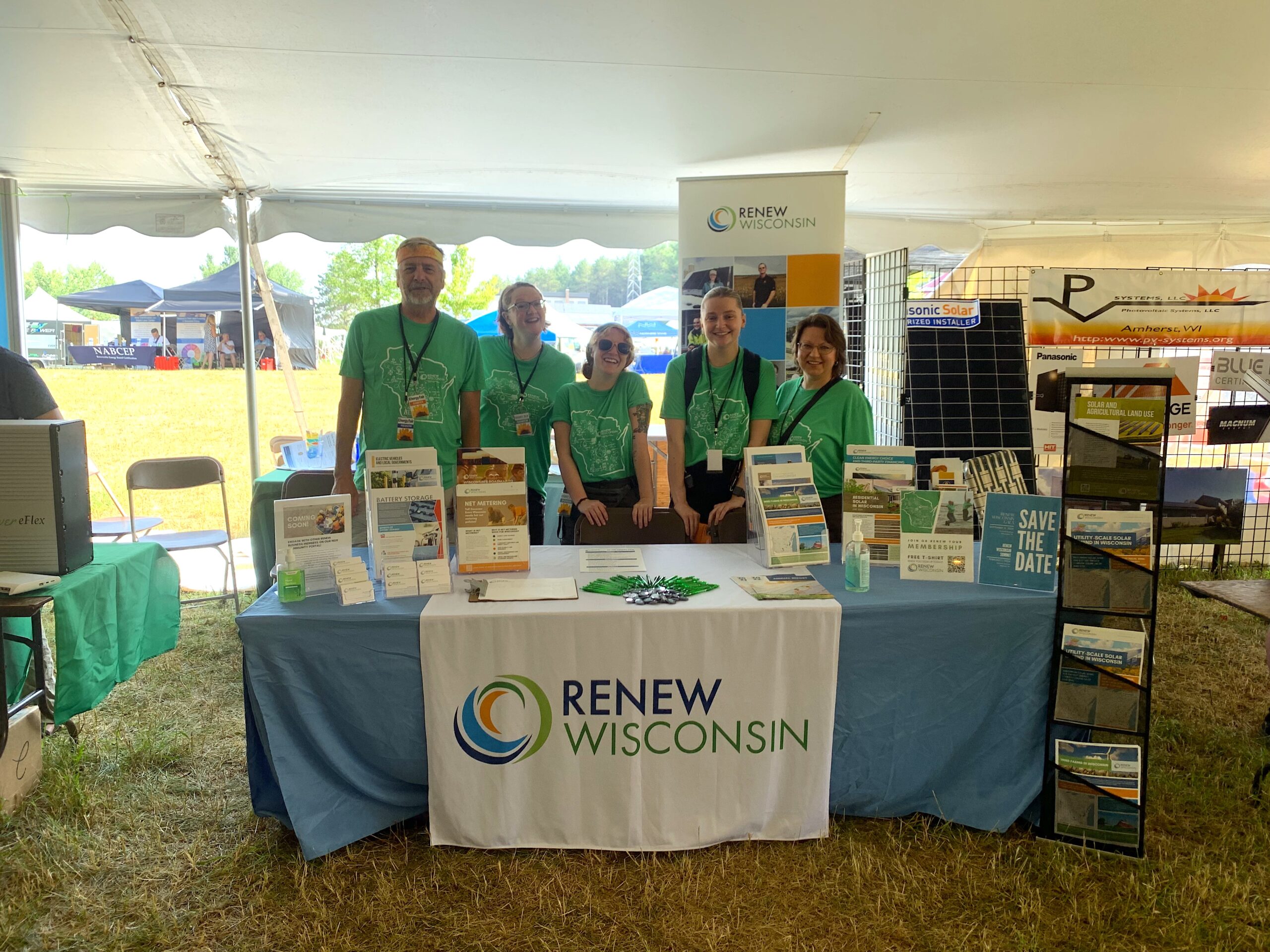
by Julia Holzschuh | Jun 27, 2023 | Electric Vehicles, Electrification, Energy Storage, Events, Inflation Reduction Act, Local Government, Netzero Wisconsin, Policy, Programs, RENEW Wisconsin, Renewables, Solar, Solar for Good, Sustainability, Utility Scale
Last weekend, the Midwest Renewable Energy Association (MREA) hosted the 32nd Annual Energy Fair, bringing people together to learn about sustainability and clean energy, connect with others, and take action toward a sustainable future. The Fair featured workshops, exhibitors, live music, inspiring keynote speakers, family fun, great local food, and more.
RENEW staff presented some compelling workshops and you can download slides from their presentations below.
Zero Carbon by 2050—A Path for Wisconsin
Andrew Kell, RENEW Policy Director, discussed zero-carbon goals and ongoing planning efforts in Wisconsin. Andrew also was a guest on a live podcast, focused on Wisconsin’s Net Zero future.
MadiSUN Workforce Training
Lauren Cohen, RENEW Program Coordinator, held a workshop regarding career growth opportunities within Wisconsin’s clean energy industry, focusing primarily on opportunities within the solar industry.
Vehicle-to-Grid: Opportunities and Challenges
Francisco Sayu, RENEW Emerging Technology Director, discussed how Vehicle-to-Grid technology unlocks the energy stored in electric vehicles and opens opportunities for energy trading, energy management, and grid resiliency.
Farming Sunshine: Solar and Ag Land Use
Nolan Stumpf, one of RENEW’s Interns, presented a session regarding solar farms and the opportunities and challenges of using the land for farming purposes and advancing clean energy.
Can Clean Energy Overcome Local Opposition?
Michael Vickerman, RENEW Clean Energy Deployment Manager, discussed the opposition clean energy faces at the local level and how to overcome those barriers.
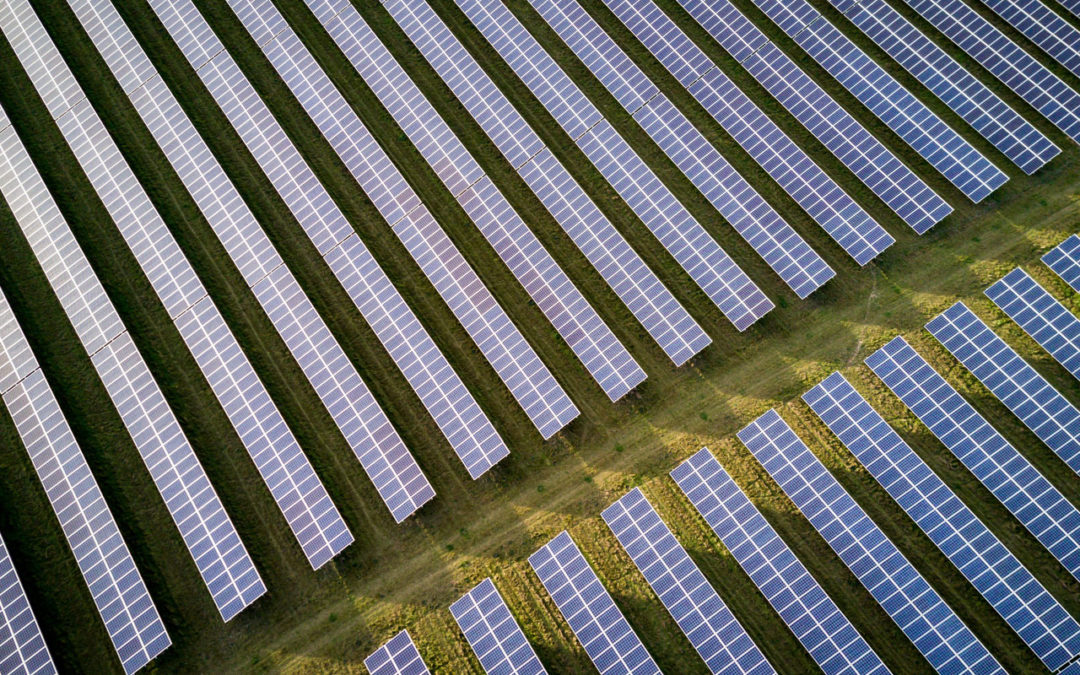
by Michael Vickerman | Apr 6, 2023 | Action Alert, Advocacy, Public Service Commission, Solar, Utility Scale
Langdon Mills Solar is a 200-megawatt solar project with a 50 MW battery energy storage system proposed for development in the Towns of Courtland and Springvale in Columbia County, Wisconsin. As designed, Langdon Mills Solar would generate homegrown, affordable, emission-free electricity sufficient to power the equivalent of approximately 30,000 homes. If approved, construction on Langdon Mills will begin in 2024 and is anticipated to be operational in 2026. For more information, visit the application here. If you want to learn more about how Langdon Mills Solar has engaged with the community, check out their website here. RENEW Wisconsin submitted testimony in support of Langdon Mills Solar in Docket 9818-CE-100, which you can access here.
Solar projects larger than 100 megawatts must gain approval from the Public Service Commission of Wisconsin (PSCW) before they can proceed to construction. Along the way, there are opportunities for public comment at the township, county, and state levels.
Please help us demonstrate Wisconsin’s enthusiastic support for solar power and this project by submitting a comment supporting Langdon Mills Solar. Be sure to specifically reference the project and the benefits that it can bring to Wisconsin. The deadline for submitting comments is May 23, 2023.

by Michael Vickerman | Mar 23, 2023 | Action Alert, Advocacy, Public Service Commission, Solar, Utility Scale
Elk Creek Solar is a 300-megawatt solar project with a 76.6 MW battery energy storage system proposed in the Township of Springbrook in Dunn County, Wisconsin. As designed, Elk Creek Solar would supply homegrown, affordable, emission-free electricity to power the equivalent of approximately 60,000 homes. If approved, Elk Creek will begin producing clean power by the end of 2025. For more information, visit the application HERE. If you would like to learn more about how Elk Creek Solar is engaging with the community, check out their website HERE. If approved, Elk Creek will begin producing clean power by the end of 2025. RENEW Wisconsin submitted testimony in support of Elk Creek Solar, which you can access HERE.
Solar projects larger than 100 megawatts must gain approval from the Public Service Commission of Wisconsin (PSCW) before they can proceed to construction. Along the way, there are opportunities for public comment at the township, county, and state levels.
Please help us demonstrate Wisconsin’s enthusiastic support for solar power in general and this project in particular by submitting a comment in support of Elk Creek Solar. Be sure to specifically reference the project and the benefits that it can bring to Wisconsin. The deadline for submitting comments is May 12, 2023.

by Michael Vickerman | Feb 22, 2023 | Action Alert, Advocacy, Public Service Commission, Solar, Utility Scale
High Noon Solar Energy Center is a 300 megawatt solar project with a 165 MW battery energy storage system proposed in southwest Columbia County, near Portage. As designed, High Noon would supply homegrown, affordable, emission-free electricity to power the equivalent of approximately 58,000 homes. If approved, High Noon would begin producing clean power by the end of 2025. For more information, visit the application here and RENEW Wisconsin’s testimony here.
An exemplary testimony to the benefits this project offers Columbia County comes from PSC comments submitted by Larry Nelson, a 4th generation farmer in Lodi, Wisconsin.
I support High Noon Solar. I am a participating landowner and 4th generation farmer on a century family farm. We grow corn and soybeans on our farm. 100% of our Corn goes to ethanol. With the auto manufacturers transitioning to electric vehicles, I am very concerned as to what this will do to our ethanol market and increased demand for electricity. Since our family started farming in the 1800s, there has been a lot of changes to agriculture and ways to be profitable. Our family has adapted over the years to remain in agriculture and stay profitable. This is not an easy task as many family farms have disappeared over the years. The High Noon Solar project is an opportunity for us to diversify our farm income. In my opinion this is just another way to farm the sun, just as we have done to grow crops over the years. Our farmland in this project does not disappear. This is a temporary use of our land. It will be seeded down and have solar arrays on it. By seeding it down the land will be protected from erosion and runoff. Our land naturally drains and we have NO DRAIN TILE. We use commercial fertilizers on our farm along with chemicals as needed. We do not have any livestock so no manure is spread on our land. The environmental assessment has been done. There are no significant impact. This project will bring beneficial jobs into our community and will have a positive economic impact. This will also bring in 1.2 million in annual tax payments to Columbia County and participating townships. There are many financial benefits from this project in all aspects but the most important one is this is good for our environment and we are doing our part to fight climate change for future generations. Thank you for your consideration.
Larry Nelson
Lodi, Wisconsin
Proposed power plants larger than 100 megawatts must gain approval from the Public Service Commission of Wisconsin (PSCW) before they can proceed to construction. Along the way, there are opportunities for public comment at the township, county, and state levels. Please help us demonstrate Wisconsin’s enthusiastic support for solar power in general and this project in particular by submitting a comment in support of the High Noon Solar Energy Center. Be sure to specifically reference the project and the benefits that it can bring to Wisconsin. The deadline for submitting comments is March 1, 2023.
[Note: Your comments need not be as lengthy as the sample below, which was drafted to present various supporting perspectives on health, environmental sustainability, and rural economic development. We encourage you to articulate the points that matter most to you. But it’s OK to frame your comments at a very high level if that’s what you’re comfortable with.]
SAMPLE COMMENT
I write in support of the High Solar Energy Center, presently under review at Docket No. 9814-CE-100. This project, like other combined solar and battery storage projects approved by the PSCW in recent years, would protect human health and the natural environment while strengthening the state’s economy.
Consistent with Wisconsin’s Energy Priorities Law, High Noon will provide these benefits by converting locally available, noncombustible renewable energy resource—sunshine—to electricity, and feeding zero-emission into existing power lines and the battery energy storage system onsite. As configured, High Noon will displace fossil fueled generation at all times, which will measurably reduce the volume of airborne pollutants and greenhouse gases discharged from Wisconsin sources.
In-state solar projects can be counted on to energize the local economy through increased revenues to local governments while diversifying our resource mix and bringing Wisconsin a step closer to energy self-sufficiency. The economic benefits come in two forms. Initially, High Noon will create between 600 and 700 jobs in Wisconsin during the project’s construction phase. Second, once it has been placed in service, High Noon will provide rental income to participating landowners as well as payments in lieu of taxes to local jurisdictions hosting the project. Projects like these can also provide an economic hedge to farmers and rural landowners whose products are subject to commodity market forces and weather conditions that are beyond their control and can often be unforgiving.
In addition to the health and environmental benefits referenced above, High Noon will also deliver benefits to the land within in the project’s footprint. The developer proposes to revegetate the land with a mix of deep-rooted plants under and around the installation. Managing the land in this fashion will improve soil health, reduce erosion, and increase biodiversity. Finally, High Noon will have no measurable impact on local agricultural output, as crop yields per acre in Columbia County have steadily increased since 1960.
I respectfully encourage the PSCW to rule that High Noon Solar Energy Center is in the public interest and issue a permit enabling the project to proceed to construction. Thank you for your consideration of my views.




